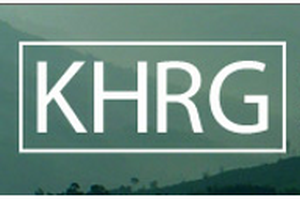KHRG is an independent local organisation committed to improving the human rights situation in Burma by projecting the voices of villagers and supporting their strategies to claim human rights. We aim to increase villagers’ capability and opportunity to claim their human rights, and ensure that their voices, priorities and perspectives influence decision makers. We encourage other local and international groups and institutions to support villagers’ self-protection strategies.
Vision
The Karen Human Rights Group envisions a future in which people in Burma achieve full human rights and justice.
KHRG Activities
- Field Research: KHRG trains community members in eastern Burma to document individual human rights abuses using a standardised reporting format; conduct interviews with other villagers; and write general updates on the situation in areas with which they are familiar. Community members are trained to summarise recent events, raise issues that they consider to be important, and present their opinions or perspectives on abuse and other local dynamics in their area.
- Report-writing: In order to directly communicate the experiences and perspectives of villagers in eastern Burma, KHRG translates and publishes the Field Research on our website exactly as it was received in the form of Interviews, Incidents Reports and Situation Updates. To ensure villagers’ voices and priorities reach influence decision makers, KHRG staff compile and analyze the field information into thematic reports, area reports or in targeted submissions.
- Village Agency Workshops: Conducted at the community level, KHRG facilitates workshops that provide a space for villagers to share their experiences and support their self-protection strategies by gaining knowledge about international human rights standards and available national mechanisms that they can use to claim their rights.
- Local and International Advocacy: By sharing our Field Research, KHRG hopes to ensure villagers’ voices and strategies for coping with human rights abuse reach decision-makers who can influence their lives. We distribute our Field Documentation and Reports to local and international human rights organisations, national institutions in Burma, United Nations agencies and rapporteurs, foreign governments and embassies, academics, journalists, and others.
Members:
Resources
Displaying 156 - 160 of 168Nyaunglebin District: Internally Displaced People and SPDC Death Squads
Nyaunglebin (known in Karen as Kler Lwe Htoo) District is a northern Karen region straddling the border of northern Karen State and Pegu Division. It contains the northern reaches of the Bilin (Bu Loh Kloh) River northwest of Papun, and stretches westward as far as the Sittaung (Sittang) River in the area 60 to 150 kilometres north of Pegu (named Bago by the SPDC). The District has 3 townships: Ler Doh (Kyauk Kyi in Burmese), Hsaw Tee (Shwegyin), and Mone.
Displacement of Villagers in Southern Pa
The region commonly known as Pa’an District forms a large triangular area in central Karen State, bounded in the west and north by the Salween River and the town of Pa’an (capital of Karen State), in the east by the Moei River where it forms the border with Thailand, and in the south by the motor road from Myawaddy (at the Thai border) westward to Kawkareik and Kyone Doh. Pa’an District is also known as the Karen National Liberation Army’s (KNLA’s) 7th Brigade area.
Killing the Shan: The Continuing Campaign of Forced Relocation in Shan State (Information Update)
This report aims to provide a picture of the current situation in central Shan State, where the military junta ruling Burma has forcibly uprooted and destroyed over 1,400 villages and displaced over 300,000 people since 1996. This campaign against civilians is still continuing, and the number of villages destroyed is increasing each month. In this report, some of the villagers who have fled in 1997 and 1998 describe their experiences.
Tenasserim Division: Forced Relocation and Forced Labour (Information Update)
SLORC's campaign of forced relocations and forced-labour road building in the Palauk-Palaw, Mergui and Tenasserim regions, which began in September 1996, is now being accelerated ... Almost every village between the Tavoy-Mergui-Kawthaung car road in the west and the Tenasserim River in the east, from Palauk in the north to Tenasserim town in the south has been ordered to move one or more times between September 1996 and January 1997..."
ADDITIONAL KEYWORDS: forced resettlement, forced relocation, forced movement, forced displacement, forced migration, forced to move, displaced
Forced Relocation in Papun District
SLORC has seriously stepped up its campaign to clear the entire rural population out of Papun District and make the entire area a free-fire zone. Since December 1995, orders have been issued to every rural village under SLORC control from Kyauk Nyat in the north to Ka Dtaing Dtee in the south, from the Salween River (the Thai border) in the east to at least 10 km. west of Papun - an area 50-60 km. north to south and 30 km. east to west. This area is rugged hills dotted with small villages, averaging 10-50 households (population 50-300) per village.


